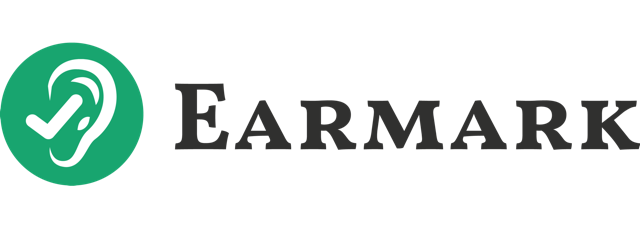Is your accounting firm’s technology stuck in the past? In a world where clients expect seamless digital experiences and remote work is the norm, relying on outdated, disconnected software can be a recipe for inefficiency, frustration, and even lost business. But with so many options on the market, how do you choose the right tools to propel your firm forward?
In a recent Earmark Podcast episode, Blake Oliver shared his framework for strategic technology adoption. He argued that firms that intentionally select software to streamline operations, enhance client experience, integrate smoothly, and enable standardization will be best positioned to thrive.
Blake walked through the key software categories firm leaders need to consider, from proposal management to artificial intelligence (AI). He emphasized the importance of choosing tools that are easy to use, align with the firm’s unique needs and processes, and facilitate client collaboration.
Proposal Software
Blake recommended proposal software options that allow firms to quickly generate professional, standardized proposals, collect e-signatures and payments, and kick off projects seamlessly. “You cannot standardize the service delivery to your clients if you don’t have standard terms in your engagement letters,” he noted.
For example, Practice Ignition and Anchor allow firms to create templated proposals with standardized terms, pricing, and payment schedules. Clients can quickly review and sign off on engagements digitally, reducing friction and ensuring consistency across the board.
Practice Management
For practice management, Blake stressed the importance of workflow tools that centralize client communications, automate tasks, and provide visibility across the firm. With remote work now the norm, he argued, “If you’re in a remote environment, how can you work remotely without having workflow software?”
Platforms like Karbon, Canopy, and Client Hub offer client portals, task management, team collaboration, and insights reporting features. By standardizing processes and centralizing information in one system, firms can boost efficiency, transparency, and accountability, even with distributed teams.
Blake shared a cautionary tale from his experience, where choosing the wrong practice management tool cost his firm weeks of lost productivity. The lesson? Prioritize ease of use and team buy-in when evaluating options to ensure successful adoption.
General Ledger & Payroll
In the realm of general ledger and payroll, Blake advised firms to curate a lean tech stack of best-fit solutions. Instead of accommodating every possible client need, he suggested choosing one or two options that cover the bases for core client types, focusing on scalability, integration, ease of use, and reporting capabilities.
For the general ledger, that might mean standardizing on QuickBooks Online for most clients, with Sage Intacct reserved for those with more complex needs. On the payroll front, Blake highlighted Gusto and OnPay as user-friendly options that automate compliance and integrate with popular GL systems.
Blake emphasized the goal of going deep on a few core platforms rather than spreading yourself thin across a dozen different tools. By strategically limiting your tech stack, you can streamline training, support, and processes while still meeting diverse client needs.
Accounts Payable & Banking
Turning to bill pay, Blake highlighted the spectrum of solutions available, from all-in-one platforms like BILL for larger clients with complex approval workflows to more streamlined options like Relay for smaller businesses. He emphasized the key is to match the tool to the client’s specific needs and design efficient processes around it.
For example, a large nonprofit with multiple departments and strict controls might benefit from BILL’s advanced approval routing and audit trails. A small business, on the other hand, may prefer Relay’s simplified workflow and flat-fee pricing. The right fit depends on factors like transaction volume, number of approvers, and accounting complexity.
Whichever tool you choose, Blake stressed the importance of clear client communication and well-defined processes. Establish expectations around bill submission, approvals, and payment timelines upfront, and consider designating a dedicated team member to manage the AP queue and troubleshoot any issues.
Artificial Intelligence
Finally, Blake touched on the exciting frontier of AI, noting that ChatGPT’s new offering for teams, coupled with Microsoft’s significant investment in OpenAI, has made the technology more viable for accounting firms than ever. He advised listeners to start exploring use cases like drafting routine documents.
For instance, firms could leverage ChatGPT to generate first drafts of engagement letters, email responses, or work papers based on predefined parameters. By automating the initial content creation, staff can focus on more strategic work like analysis and advisory.
However, Blake cautioned against an “AI-first” approach. Tools like ChatGPT should augment human expertise, not replace it. He recommended starting with narrow, well-defined pilots and keeping humans in the loop to review and refine AI-generated content.
The Path Forward
Across all these categories, Blake underscored the importance of approaching technology decisions with intention and a focus on client needs. Flashy features may generate buzz, but the true test of any tool is how well it supports your firm’s service delivery and client experience.
By aligning your tech stack with your strategic priorities, designing efficient processes, and investing in training and change management, you can harness the power of modern software to drive meaningful results. The key is to start small, iterate often, and never lose sight of the humans at the heart of your business’s heart – your team and your clients. Ready to dive deeper into Blake’s strategic technology playbook? Listen to the full episode and start charting your firm’s path to digital success.
